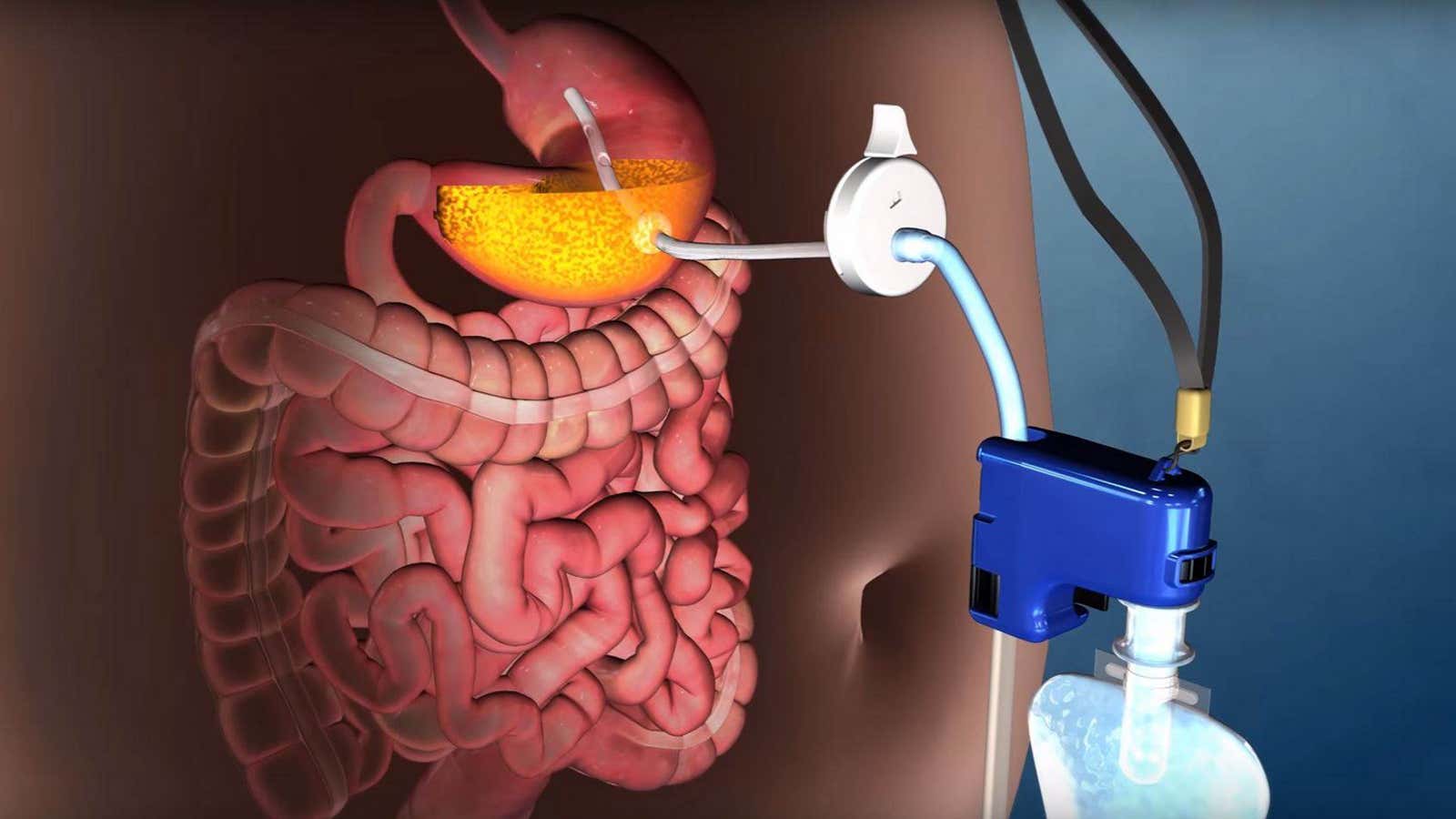In order to lose significant amounts of weight, many obese patients turned to types of bariatric surgery. These surgeries, which limit the amount they can eat by either shrinking the stomach or bypassing it altogether, are expensive, invasive, and may require patients to eat severely restrictive diets for the rest of their lives.
On Tuesday (June 14) the US Food and Drug Administration (FDA) approved a device that offers a new solution for obese patients. The AspireAssist, manufactured by Aspire Bariatrics in King of Prussia, Pennsylvania, uses a tube inserted into the stomach and small external system to pump out about a third of the food from a patient’s stomach after a meal, the contents of which can be emptied into the toilet.
In a clinical trial, obese patients who use the device after every meal with regular meetings with counselors about healthy choices were able to lose about 12% of their total body weight after a year. Comparatively, those doing counseling alone lost about 3% of their body weight.
It undoubtedly sounds gross, and even a bit like assisted bulimia, but this device may be a long-term solution for patients struggling with obesity, characterized as having a body mass index between 35 and 50. ”With this device, you only remove about a third of the food, and that’s because the device sits primarily in the upper portion of the stomach,” Kathy Crothall, the CEO and founder of Aspire Bariatrics, told Quartz. The weight loss occurs steadily over time, and patients still get nutrients from their food, which are mostly absorbed in the intestines.
The device can be implanted in a 15-minute outpatient procedure, but patients who use it will have to make a change to their eating habits. “The only way this device works is for patients to chew, chew, chew,” Crothall said. If patients eat their food too quickly, the chunks of food will be too big to pass through the tube to the external, detachable part of the device. Although the tube can be unclogged easily with water, blockages will prevent it from emptying stomach contents.
“The AspireAssist device should not be used on patients with eating disorders, and it is not intended to be used for short durations in those who are moderately overweight,” the FDA said in a statement. It is truly is for individuals who have large amounts of weight to lose, as evidenced by the cost: Cothrall estimates that, outside of the cost of the procedure to insert the device, total costs for patients—including additional lifestyle counseling—may be anywhere from $8,000 to $13,000.
The device is intended for long-term use. The valve, called a skin-port, can be hidden relatively easily by clothing, and patients can choose not to use it after some meals if they prefer. It can be removed with a similar outpatient procedure.
